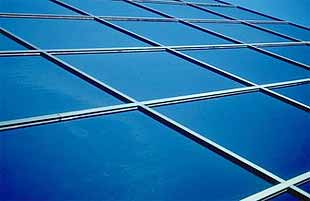 This week a couple of important solar breakthroughs have surfaced in the news. Both IBM and Physicist Bram Hoex (and colleagues) have demonstrated two different solar breakthroughs worth noting.
This week a couple of important solar breakthroughs have surfaced in the news. Both IBM and Physicist Bram Hoex (and colleagues) have demonstrated two different solar breakthroughs worth noting.
The IBM solar breakthrough involves using a thin liquid metal layer of gallium and indium that is cooled by a plate of copper. By use of solar concentrators that raise the sun’s rays by a factor of 10 and a cooling mechanism for the photovoltaic cells, IBM is able to produce the highest efficiency yet, it is claiming.
Big Blue is planning to use the yellow rays of the sun and license its cooling and photovoltaic concentrator systems to other solar companies. Meanwhile Physicist Bram Hoex and his pals at the Fraunhofer Institute in Germany have improved the efficiency of a particular type of solar cell.
According to Hoex (and this is no hoax), his team at the Eindhoven University of Technology in Germany has improved the efficiency of a specific photovoltaic cell from 21.9 to 23.2 percent. What may at first may seem like a small increase is actually rather large as researchers have struggled for years to up the efficiency of cells by much smaller increments.
In addition, this will help reduce the cost of the solar cells in manufacturing, which is passed onto the consumers. By using a thin layer of aluminum oxide of approximately 30 nanometers on top of a crystalline silicon solar cell, surface loss of sunlight energy can be greatly reduced or eliminated.
Since the IBM and Hoex solar breakthroughs both involve different aspects of making photovoltaic cells more efficient, what would be really exciting would be (if possible) to combine these systems for ultra-efficient renewable electricity generation. With a few more breakthroughs in photovoltaic technology such as these, it’s only a matter of time until solar rooftops become the standard.